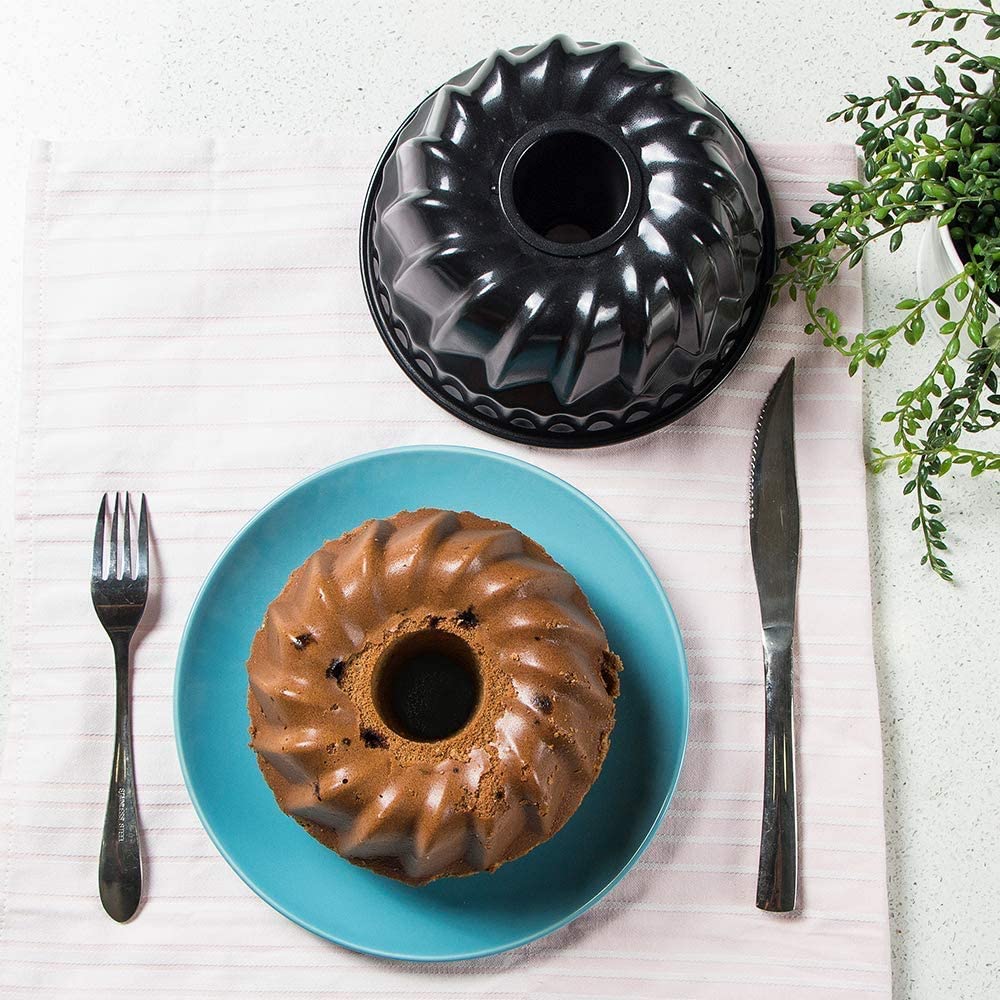Bundt cakes have a reputation for being tricky, but with the right technique for preparing the pan, you can be certain of beautiful results every time.
How to Prepare a Bundt Pan
Aside from the obvious beauty of the cake in its entirety, many Bundt designs turn each slice into a striking cross-section as well. Making a beautiful Bundt cake starts with using the right pan, one that's durable and well-designed. While ring-shaped cakes are a long-standing European baking tradition.
Bundt cake with powdered sugar
I like baking layer cakes in silicone pans, and that's my preference for Bundt pans as well. Webake silicone fluted cake mold can limit excess browning and perform better than those made from steel (whether brushed, aluminized, or carbon steel). Whether it's a thrift-store find or a family heirloom, a vintage Bundt pan may be among a baker's most treasured possessions, but if the interior surface of an old pan is scratched or scuffed, you may not be able to get a clean release for your cakes.

Greasing the Pan
Because of their ornate design, Bundt pans require a bit of special prep in order to ensure that cakes can be removed without sticking or tearing—generally a thin coat of fat, followed by a thin coat of flour. This step is best done immediately prior to baking, so that the prepared coating won't dry out while the batter is prepared. Many brands, including Nordic Ware, expressly advise against greasing a Bundt pan with traditional cooking spray, as the combination of personalized fat and dry heat can lead to a polymerized residue that's difficult to remove, especially over time.
After preparing and filling a Bundt pan, I wipe the edges of the pan clean with a paper towel that's damp with hot water. This removes excess cooking spray, minimizing the potential for the residue to form around the rim of the pan. After unmolding my cake, I let the pan cool until it's comfortable to the touch, then give it a brief soak in a sinkful of hot, soapy water. After a few minutes, I gently scrub the entire pan, inside and out, with a soft washcloth.
Dusting the Pan
Once the pan is lightly but evenly greased, I place it on a large sheet of parchment and sift in a generous amount of cake flour. Next, I hold the pan on its side and slowly rotate it in a full circle, tapping it against the counter with each turn to dislodge the excess flour. If necessary, I'll rotate it again in the other direction, tapping and turning until every surface is lightly coated and the extra flour has spilled out.
preparing a bundt pan with flour
That initial shower from the sieve goes a long way in coating all the hard-to-reach parts of the pan, while the tap-and-twist technique sends little avalanches of flour down the ridges and valleys of the pan. Having a sheet of parchment underneath it all allows me to work freely, without any worry about the mess.
Filling the Pan
How much batter should go into a Bundt pan? Broadly speaking, a classic 10-cup pan should contain enough batter to reach the two-thirds mark, but should be no more than three-quarters full. That's a good rule of thumb, but pretty meaningless when you're staring at a recipe with no way to calculate the total volume of batter it will produce.

Baking a Bundt Cake
Bundt cakes should always be baked on a sheet pan, as their uneven shape may cause them to tip to one side when placed on a wire oven rack. This can also be handy for catching overflow, should the amount of batter be miscalculated. When adapting a recipe to a Bundt pan, it can be tricky to guess how much time it will need in the oven. Sometimes you just have to play things by ear, but I generally budget about one minute per ounce of batter at 350°F (180°C) in a conventional oven.
Unmolding a Bundt Cake
After baking, I let my Bundt cake cool for about 10 minutes to give its crumb a chance to firm up. Then I use my fingers to gently pull the cake away from the side of the pan. Next, I'll place a serving platter or cake stand on top, then quickly flip the whole thing over (using oven mitts to protect my hands). With the right batter, in a pan that's prepared correctly, a fully baked Bundt cake should release cleanly from the pan, leaving its beautiful design on full display.
Serving the Bundt Cake
Bundt cakes are amenable to many types of glaze, but more often than not, I find myself finishing them with a simple dusting of powdered sugar.
![]()

